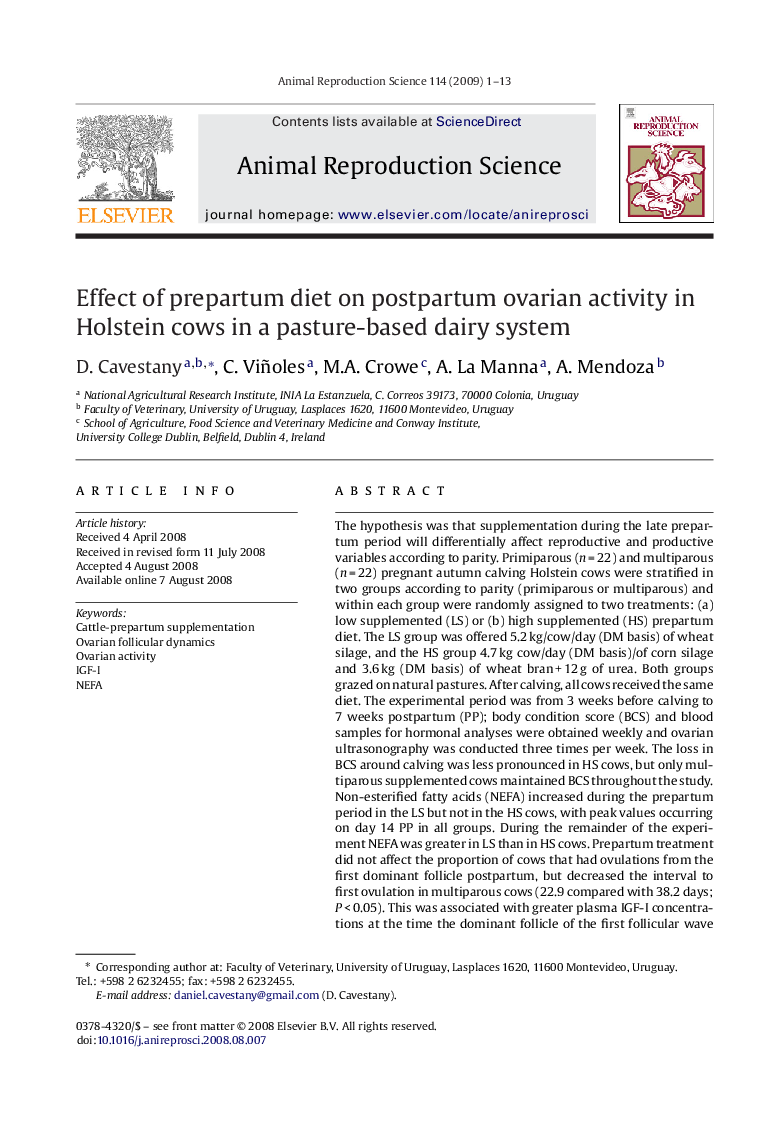| Article ID | Journal | Published Year | Pages | File Type |
|---|---|---|---|---|
| 2074195 | Animal Reproduction Science | 2009 | 13 Pages |
The hypothesis was that supplementation during the late prepartum period will differentially affect reproductive and productive variables according to parity. Primiparous (n = 22) and multiparous (n = 22) pregnant autumn calving Holstein cows were stratified in two groups according to parity (primiparous or multiparous) and within each group were randomly assigned to two treatments: (a) low supplemented (LS) or (b) high supplemented (HS) prepartum diet. The LS group was offered 5.2 kg/cow/day (DM basis) of wheat silage, and the HS group 4.7 kg cow/day (DM basis)/of corn silage and 3.6 kg (DM basis) of wheat bran + 12 g of urea. Both groups grazed on natural pastures. After calving, all cows received the same diet. The experimental period was from 3 weeks before calving to 7 weeks postpartum (PP); body condition score (BCS) and blood samples for hormonal analyses were obtained weekly and ovarian ultrasonography was conducted three times per week. The loss in BCS around calving was less pronounced in HS cows, but only multiparous supplemented cows maintained BCS throughout the study. Non-esterified fatty acids (NEFA) increased during the prepartum period in the LS but not in the HS cows, with peak values occurring on day 14 PP in all groups. During the remainder of the experiment NEFA was greater in LS than in HS cows. Prepartum treatment did not affect the proportion of cows that had ovulations from the first dominant follicle postpartum, but decreased the interval to first ovulation in multiparous cows (22.9 compared with 38.2 days; P < 0.05). This was associated with greater plasma IGF-I concentrations at the time the dominant follicle of the first follicular wave reached its maximum diameter (8.0 compared with 3.6 nmol/L; P < 0.05). However, prepartum treatment had no effect on onset of ovarian activity in primiparous cows. Supplementation had no effect on milk production or milk protein percentage but increased milk fat percentage. We conclude that feeding a high-supplemented prepartum diet to multiparous cows allowed them to maintain BCS around calving, and this was associated with greater concentrations of IGF-I and an earlier onset of estrous cycles after calving.
